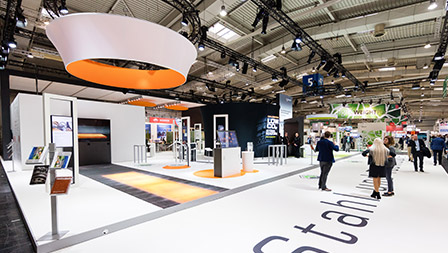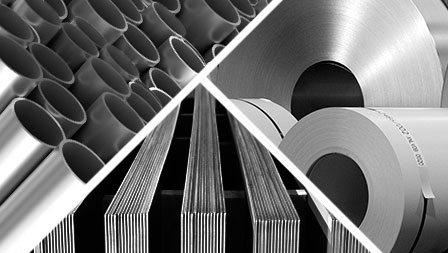Salzgitter AG and VNG AG cooperate in the field of green gases
31.08.2020 | Salzgitter AG
Feasibility study investigates the economic viability of a supply of pyrolytically generated hydrogen and biomethane
Salzgitter/Leipzig, August 31, 2020. VNG AG and Salzgitter AG are to join forces to investigate the use of climate-neutral hydrogen and biomethane for producing steel at the Salzgitter Flachstahl GmbH steelworks in Salzgitter, Lower Saxony. A letter of intent has been signed to this effect.
The two companies’ vision is to supply the integrated steelworks in Salzgitter with so-called turquoise hydrogen produced in Central Germany through a pipeline. The first step initially involved assessing the economic viability based on a feasibility study conducted jointly with the Fraunhofer Research Institution for Energy Infrastructures and Geothermal Systems IEG as well as the Fraunhofer Institute for Systems and Innovation Research ISI. The emphasis was placed on the potential deployment of pyrolysis technology for producing hydrogen.
“Based on the investigated scenarios, the cost of producing hydrogen from the pyrolysis procedure could be competitive compared with electrolysis and the process helpful in securing low emission hydrogen supplies. A prerequisite is, however, that the technological challenges of pyrolysis are surmounted in a timely fashion, that good application possibilities for the associated carbon are found, and that methane emissions along the entire process chain can be plausibly limited,” stated Prof. Mario Ragwitz who heads up the Fraunhofer Research Institution for Energy Infrastructures and Geothermal Systems IEG (IEG) headquartered in Cottbus.
The economic viability of using pyrolysis technology on an industrial scale while taking account of the various political framework conditions and necessary investments for the pyrolysis facilities, transport routes and the use of storage were the subject of the investigations. These scenarios differ depending on the price of CO2, electricity and gas and the use of biogas. In addition, a comparison was made with the use of pure natural gas or the deployment of the electrolysis method for producing hydrogen with electricity generated in Germany. Moreover, anchoring Salzgitter in a future hydrogen grid also played a role.
“Our investigations have shown that supplying the Salzgitter site with green gases is technically and economically possible despite the anticipated high demand for hydrogen,” says Cornelia Müller-Pagel, head of Green Gas at VNG AG based in Leipzig. “As far as economic viability is concerned, we nevertheless need even greater openness to technology in developing a hydrogen energy economy in the short and medium term, also in terms of funding policy. Along with green hydrogen, blue and turquoise hydrogen are also to play an equally important role in the future.” In order to compare the various methods of producing hydrogen in the future with regard to their environmental compatibility, Müller-Pagel advocates a monitoring and certification system that is as comprehensive and holistic as possible to be deployed across the entire EU.
At Salzgitter AG, investigating the future use of hydrogen in production goes hand in hand at with an analysis of cutting-edge methods and innovative procedural technologies aimed at significantly reducing CO2 emissions: Under the project name of SALCOS (Salzgitter Low CO2Steelmaking), a concept for decarbonizing steel production was developed back in 2015. The first steps in implementing this concept consisted of the PEM electrolysis with an output of 2.5 MW with installation currently under way and a high-temperature electrolyzer with a 720 kW output on the plant site in order to cover current requirements for hydrogen in annealing processes, as well as the building of seven wind turbines.
Dr. Alexander Redenius from Salzgitter AG: “Converting to decarbonized steel production presents a huge challenge. Pressure from international competition and the enormous costs of the transformation make government support imperative. Moreover, we are advocating the incremental transformation of conventional steel production routes. In the near term, the use of natural gas in a direct reduction aggregate to be newly built could already achieve CO2 savings of more than 60 percent compared with the conventional route. Incrementally introducing hydrogen up to 100 percent can enable steel production that is almost as CO2 neutral as possible. This could proceed in tandem with building up production capacities for green and turquoise hydrogen.” The partners now intend to define a successor project with further possible steps, thereby paving the way for the joint implementation of the project idea.
About Salzgitter AG
Salzgitter AG ranks among Europe’s leading steel and technology groups, with external sales of around € 9 billion, more than 25,000 employees, and just under 160 domestic and international subsidiaries and associated companies. It is structured into the business units of Strip Steel, Plate/Section Steel, Mannesmann, Trading and Technology. Salzgitter Flachstahl GmbH is the Group’s largest subsidiary. It produces a wide range of high-grade special and branded steels for sophisticated customer sectors, such as the automotive industry.
More information on the Salzgitter Group can be found at: www.salzgitter-ag.com. Information on the SALCOS at: https://salcos.salzgitter-ag.com/.
About VNG AG VNG AG is a group of 20 companies operating across Europe with a broad, future-proof performance portfolio in gas and infrastructure, as well as over 60 years of experience in the energy market. The Leipzig headquartered group has a workforce of around 1,200 employees and generated revenues of around € 10.5 billion in fiscal 2019. VNG concentrates on the four divisions of Trade & Sales, Transport, Storage and Biogas along the gas value chain. Based on its core competence in gas, VNG is increasingly directing its focus toward new business areas with its “VNG 2030+” strategy, which also includes green gases and digital infrastructures. More information is available at www.vng.de.
















